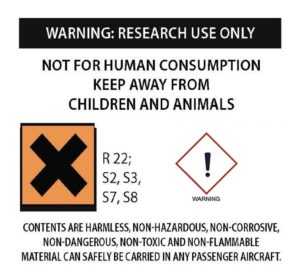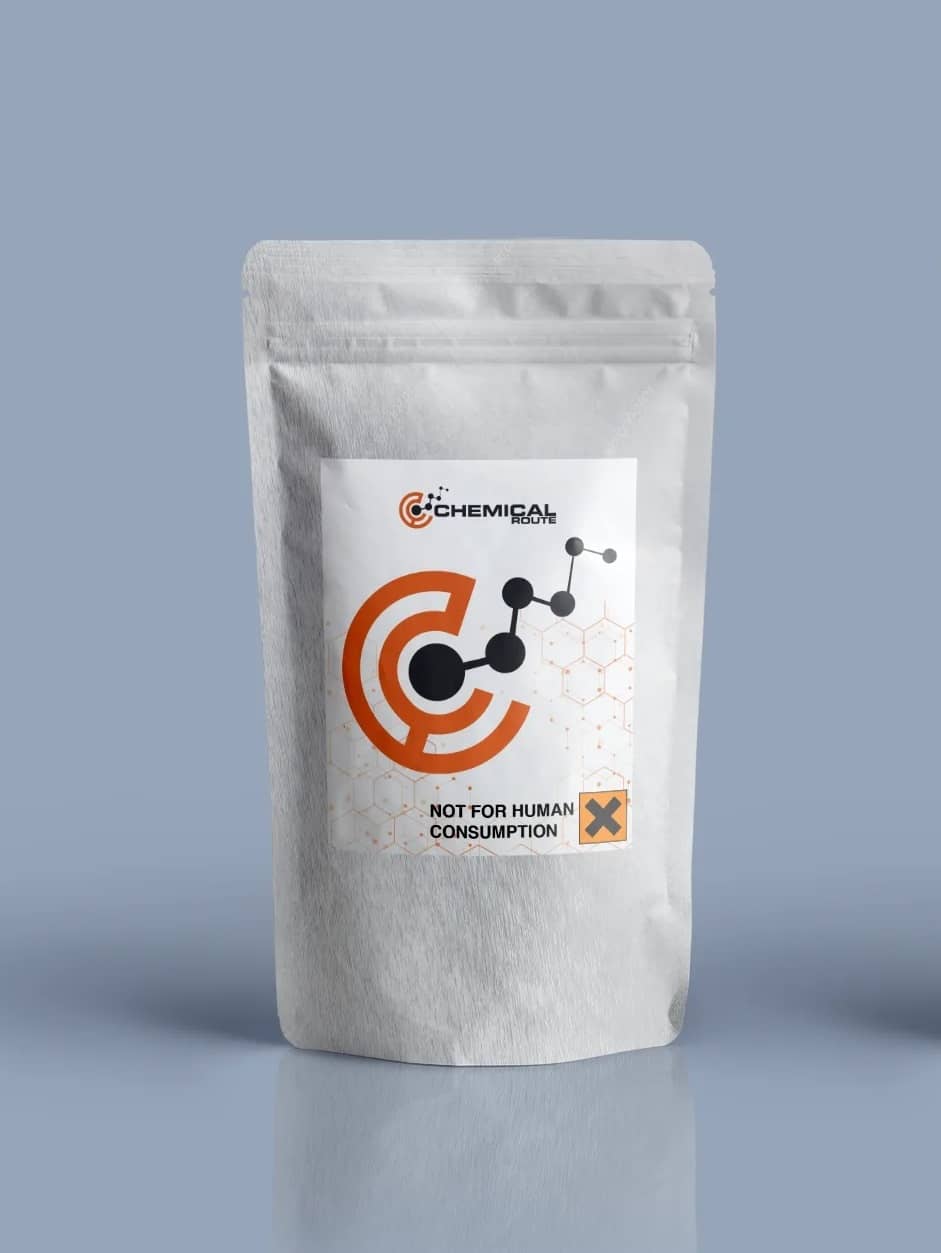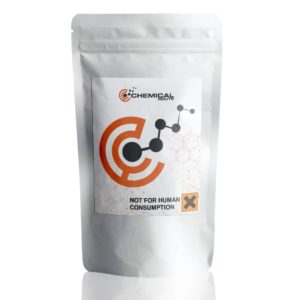Description
Ethylone, MDEC, βk-MDEA
Product information
IUPAC-name (RS)-1-(1,3-benzodioxol-5-yl)-2-(ethylamino)propan-1-one
Synonyms Ethylone, MDEC, βk-MDEA, bk-Methylenedioxyethylamphetamine, 3,4-Methylenedioxyethylcathinone, 3,4-Methylenedioxy-N-ethylcathinone
Formal name 1-(1,3-
Cas number 1112937-64-0, 1454266-19-3 (HCI)
Formula C12H15NO3, C12H15NO3 • HCl
Molar Mass 221.256 g·mol−1
Purity 98.0 % min.
Formulation Powder, Solid, Crystals
Solubility
- DMF: 5 mg’ml
- DMSO: 10 mg/ml
- Ethanol: 0.3 mg/ml
- PBS (pH 7.2): 5 mg’ml
Ethylone, MDEC, βk-MDEA, bk-Methylenedioxyethylamphetamine, 3,4-Methylenedioxyethylcathinone, 3,4-Methylenedioxy-N-ethylcathinone
3,4-Methylenedioxy-N-ethylcathinone, also known as ethylone, is a recreational designer drug that can be used in combination with other drugs such as amphetamines and phenethylamine. It is an -keto analogue of the MDEA. Although it has only been used in humans for a short time, it is less potent than the relative methylone. In 2011, it was found in various cathinone products in the US.
This substance is a type of synthetic cathinone that can be derived from the khat plant. It can also increase an individual’s sense of benevolence and empathy. This is similar to the effects of other drugs such as amphetamines and MDMA. Its effects can also be compared to those of other empathogenic substances, such as cocaine.
Due to the nature of the compounds used in the production of synthetic cathinones, their chemical structures have changed. This is believed to be an attempt to avoid the legal restrictions.
As a designer drug, ethylone can be sold on the street as a substitute for MDMA or methylone, which is due to the decreasing availability of these substances in the research chemicals market. Despite the similarities between these drugs’ pharmacological and behavioral properties, it is important to note that their subjective effects are not completely identical.
Although it has only been used in humans for a short time, ethylone is less potent than the relative methylone. It can also possess a more classical stimulant-type effect.
Chemistry
A synthetic version of the phenethylamine known as ethylone is a component of the cathinone family. Like amphetamines, it is structurally similar to other drugs in that it has a phenethylamine core that is bound to an amino acid called NH2. However, unlike other phenethylamines, such as those used in amphetamines, the structure of ethylone does not change when a ketone functional group is added.
Ethylone is a component of the cathinone family that has an ethyl substitution at RN. This is useful for drugs such as MDEA and 4-MEC. It also has a pair of oxygen group substitutions at R3 and R4 that are used to form a methylenedioxy ring. This ring is similar to that of the two other drugs, MDMA and MDA.
Pharmacology
Ethylone is a mixed reuptake inhibitor and releasing agent of the neurochemicals dopamine, serotonin, and norepinephrine. These are the neurotransmitters that are responsible for the pleasure, reward, and motivation that we feel. They are also responsible for the accumulation and reabsorption of these chemicals. When these chemicals are inhibited, they can cause a physical and emotional boost.
Compared to methylone, ethylone has a lower binding affinity for the serotonin and dopamine transporters. It also has a similar level of affinity for the other neurochemicals.
The various pharmacology differences between ethylone and methylone are that it is less potent in terms of its dose and has better balanced effects on the serotonin and dopamine receptors. However, it is still capable of releasing highly active compounds.
The toxicological and physiological properties of this compound has not been analyzed. Usage of this Chemical should be for research and forensic purposes only.
WARNING This product is not for human or veterinary use.

This product is only available to persons of 21 years old and above.
Hazard statement(s)
| H302 | Harmful if swallowed |
| H315 | Causes skin irritation |
| H319 | Causes serious eye irritation |
| H332 | Harmful if inhaled |
| H335 | cause respiratory irritation |
| H336 | cause drowsiness or dizziness |
| Precautionary statement(s) | |
| P264 | Wash hands thoroughly after handling |
| P280 | protective gloves/protective clothing/eye protection/face protection |
| P305 + P351 + P338 | IF IN EYES: Rinse cautiously with for several minutes. Remove contact lenses, if present and easy to do. Continue rinsing. |
| P337 + P313 | If eye irritation persists: Get medical advice/attention |
| P261 | Avoid breathing dust/ fume/ gas/ mist/ vapors/ spray |
| P271 | Use only outdoors or in a well-ventilated area |
| P304 + P340 | IF INHALED: Remove victim to fresh air and keep at rest in a position comfortable for breathing |
| P312 | Call a POISON CENTER or doctor/physician if you feel unwell |
| P403 + P233 | Store in a well-ventilated place. Keep container tightly closed |
| P405 | Store locked up |
| P501 | Dispose of contents/container to a licensed disposal company |



Reviews
There are no reviews yet.